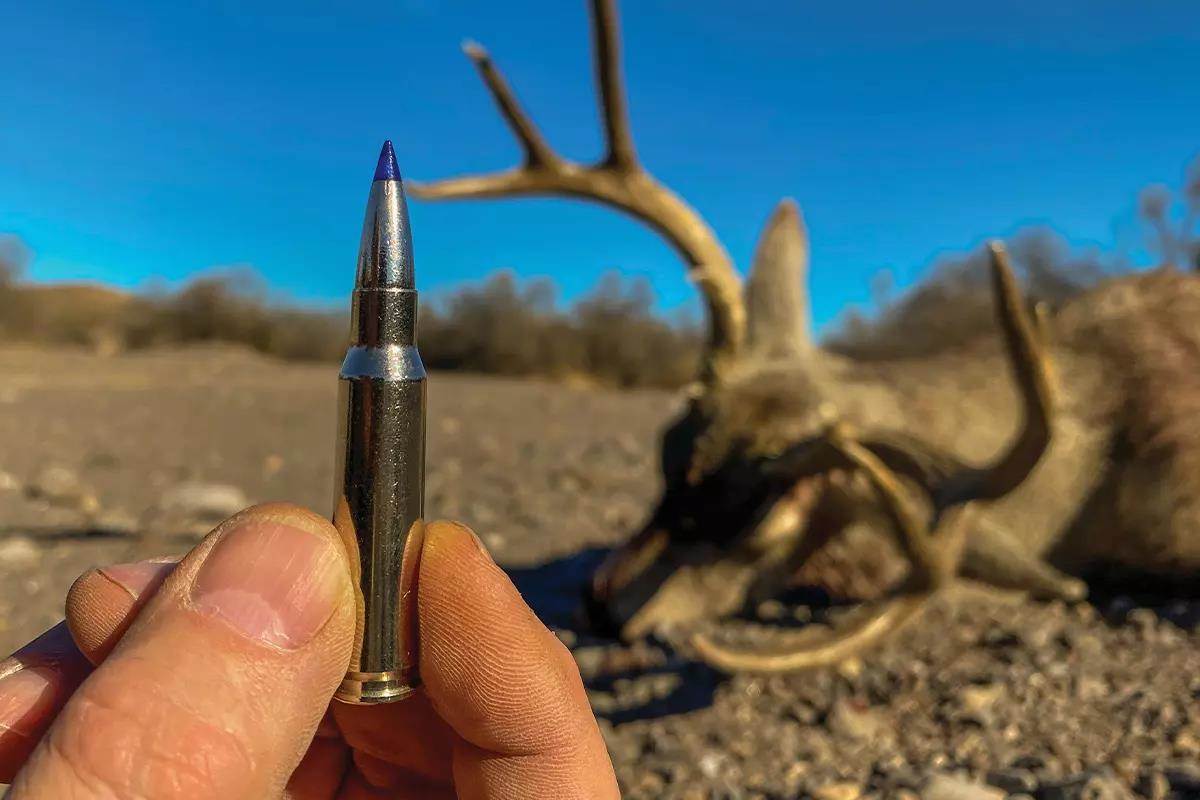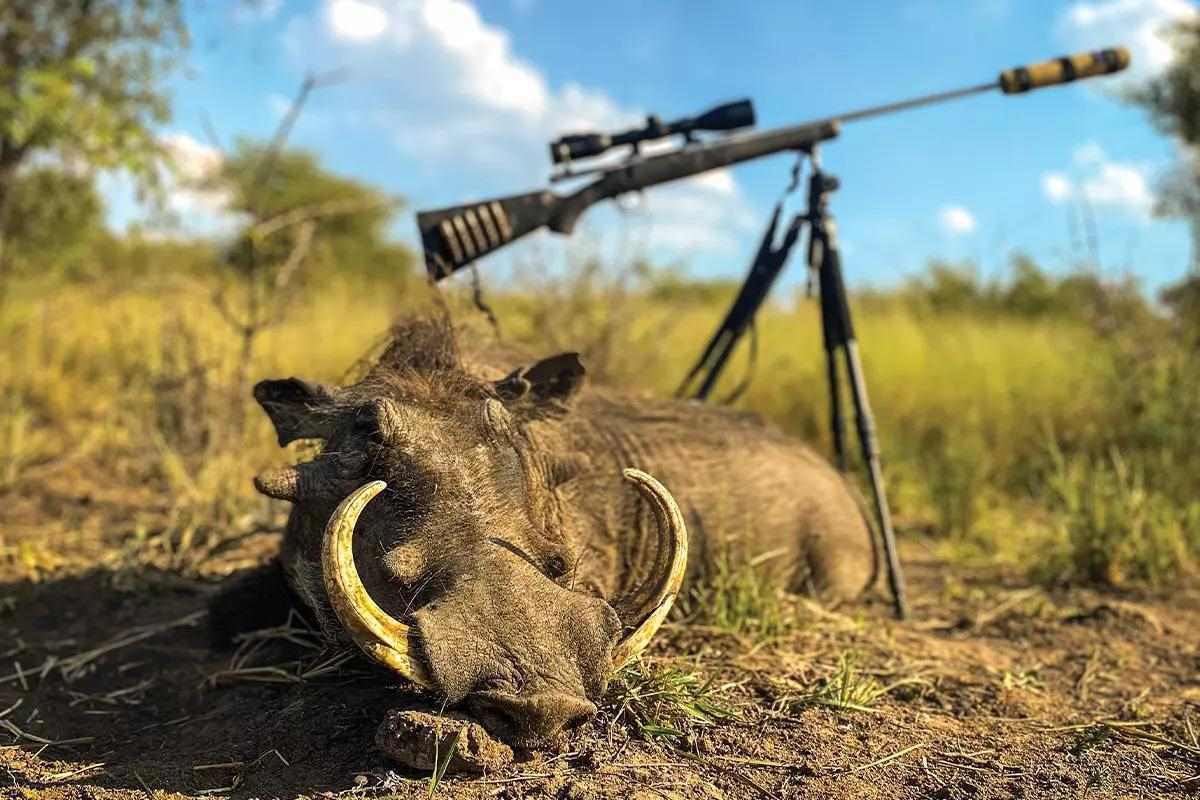
The .308 Win. is a proven performer on most big game, aside from truly large or dangerous animals, at common hunting distances. It’s the author’s go-to option on most hunts. (Photo by Richard Mann)
I doubt we know who first uttered the words, “The .308 is great.” I first heard them from outdoors writer John Barsness. We were in a hunting lodge near Uvalde, Texas, and he was advising a young man on what cartridge to have his first custom rifle chambered in. Since then, I’ve unapologetically stolen those words when offering similar advice. But I’m told the great gun writer John Wootters once wrote something similar in an article about the .308 Winchester. Regardless, those four words are a declaration that is undeniably true. I believe the .308 Win. is the best general-purpose big-game rifle cartridge.
You probably don’t agree, and this is partly because cartridge selection is a very personal thing; it’s how we all individualize our hunting tools. Often, relationships between hunters and rifle cartridges are also very emotional. You might like a cartridge because your father used it, or because you used it to take your best buck. And, finally, some might disagree simply because many hunters don’t have enough hunting opportunities to garner enough experience, with enough different cartridges, to make valid comparisons.
Admittedly, the .308 Win. is not the fastest, flattest-shooting or hardest-hitting big-game cartridge. But for much of the big-game hunting most hunters do, and for most shots at big-game animals that should be taken, the .308 Win. is superbly sufficient. Most shooters can tolerate its recoil, there are usually more factory .308 Win. loads to choose from than with other cartridges, and you can find .308 Win. ammunition almost anywhere you go.
I’ve used it extensively in North America, Africa and Canada. In fact, I’ve taken more big-game animals with the .308 Win. than any other cartridge. It’s not my personal favorite—that’s a toss-up between the .223 Rem. and .35 Rem.—but it is the cartridge I most often turn to because I know it works. I used it to take my best West Virginia whitetail at close range and my best elk out past 300 yards.
I think its uniqueness is the balance it offers the hunter. It shoots flat enough, hits hard enough and delivers sufficient terminal performance to deal with any big-game animal between 100 and 1,000 pounds, at least at distances most of us have any business shooting.
Given the connections to cartridges most hunters have, I may not convince you to trade your .270 or .30-06 for a .308. But maybe I’ll convince a few of you to give it a closer look. And, for those who are already a fan of the .308 Win., perhaps I’ll solidify your opinion of the cartridge.
In any case, I want to share my experiences with the .308 Win. over just the first three months of 2024, which started in Texas and ended in the Eastern Cape of South Africa. In only three months, there were 17 big-game animals taken with a Kimber Model 84 and three different .308 Win. loads. Here’s a look at how the cartridge and these individual loads performed.

FEDERAL 175-GRAIN TERMINAL ASCENT
The Terminal Ascent bullet is exclusive to Federal and relatively new, and it’s loaded in the Terminal Ascent line of ammunition. The bullet is designed to work at close range and at distance and should show measurable bullet upset with impact velocities as slow as 1,500 fps. With the heavy-for-caliber 175-grain .308 Win. bullet and its 0.520 G1 ballistic coefficient (BC), this means you should see bullet upset after impact as far out as 700 yards. This is a bonded bullet with a polymer tip to aid with BC and to help initiate bullet upset. It also has what Federal calls AccuChannel groove technology to minimize drag, and the bullet and cartridge cases are nickel plated to resist corrosion. Out of the 22-inch-barreled Kimber, this load averaged 2,715 fps and printed three-shot groups averaging just under an inch.
The Terminal Ascent load was used to take a mule deer buck, three warthogs, a jackal and a kudu cow. Shot distances ranged from 35 to 360 yards. I held too high on the mule deer and hit him in the hollow area between the lungs and spine. After some tracking, a follow-up shot at 230 yards ended it. On the rest of the animals, I made good shots and none of them took a step after bullet impact. None of the bullets were recovered, as they passed through the animals.

REMINGTON 172-GRAIN SPEER IMPACT
Four big-game animals were taken with this load, which Remington calls Premier Long Range, and shot distances ranged from 78 to 285 yards. All the bullets passed through except for the first shot on a cull kudu bull. That shot at 285 yards was a frontal shot and the bullet hit a bit to the right, passing through the diaphragm and back into the paunch. As the bull turned to run, another shot at about 300 yards broke his front leg just below the shoulder, and he went about 60 yards before going down. I made better shots on the other three animals that included a kudu cow and two warthogs, and all these animals fell where they were standing.
- Also by Richard Mann: Little Gun, Big Handgun Hunting Power
This is a new load from Remington, featuring a new bullet from Speer. Though outwardly this bullet looks very different from the Terminal Ascent, construction wise they seem very similar. It, too, is a bonded bullet with a Slipstream polymer tip and is advertised to upset at speeds similar to those of the Terminal Ascent.
The bullet recovered from the kudu bull hit at about 2,250 fps, had a recovered weight of 157 grains and a recovered diameter of 0.68 inch. Out of the Kimber, this load shot nearly identical to the 175-grain Terminal Ascent with an average muzzle velocity of 2,748 fps.
BUFFALO BORE 150-GRAIN BARNES TTSX
A variety of manufacturers use this bullet in their loads, but the Buffalo Bore version is special. Out of the 22-inch-barreled Kimber, it had a muzzle velocity of 2,944 fps. Even with the bullet’s low 0.42 BC, at that velocity, this load’s trajectory was very close to that of the Terminal Ascent and Speer Impact loads with bullets having higher BCs. Precision was similar as well. A reputation for deep penetration—typically 15 percent to 20 percent more than bonded bullets—explains why none of the seven fired were recovered. On the downside, due to the lack of material transfer, tissue damage was a bit less. Mono-metal bullets like this need to impact at about 2,000 fps for best results, limiting the load to about 450 yards, even with its high initial velocity.
- Related: Best Bullets for Boar Hunting
Seven of the 16 animals taken with the .308 Win. in this three-month period were taken with this load, all with one shot each and at distances ranging from 65 to 280 yards. Animals taken included three warthogs, a gemsbok, a wildebeest, a lechwe and a zebra. In Triple-Shock fashion, all the bullets passed through. Even the zebra, which is notorious for stopping bullets and was hit with a quartering shot, could not stop the 150-grain TTSX. However, also consistent with mono-metal bullet performance, the larger-bodied animals ran farther after the shot.
STILL GREAT
All three of these loads performed well on my various hunts. Their performance, combined with my extensive experience with the .308 using a variety of other loads, helps illustrate why the cartridge is one of the best available for general-purpose big-game hunting. I might like other cartridges better, but when it comes down to it, I’m more likely to select the .308 Win. for big game than any other cartridge. Indeed, the .308 is great!
- This gear article was featured in the September 2024 Game & Fish Magazine. How to subscribe.








